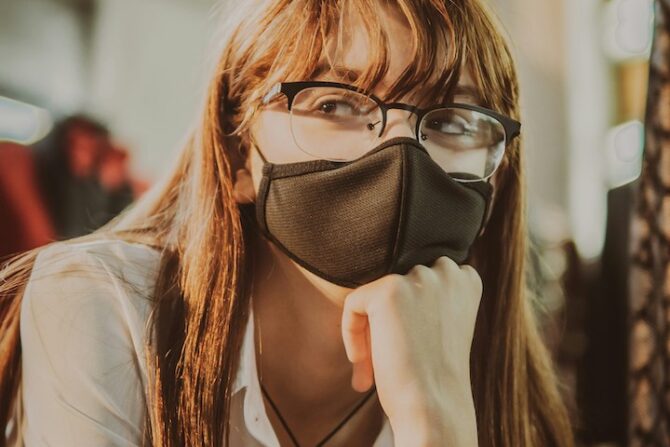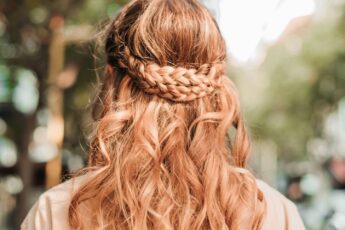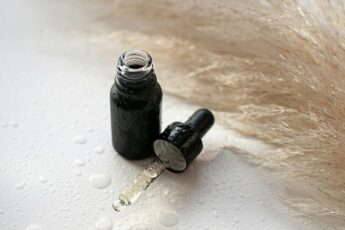Ever looked in the mirror after lightening your hair and thought, “Wait… why is it orange?” You probably wanted that soft blonde glow — not something that reminds you of a traffic cone.
If that’s where you are right now, take a deep breath. You’re not alone, and no, you didn’t mess up. Orange hair after bleaching is super common. It’s just part of how hair reacts when you lighten it. And luckily, fixing it doesn’t have to be a nightmare.
I’m going to walk you through everything you need to know about toning orange hair — in plain English. No confusing color theory, no weird salon talk. Just real help, step-by-step, like I’d explain it to a friend over coffee.
Table of Contents
Why Does Hair Turn Orange?
Let’s start with the obvious question.
You probably bleached or lightened your hair expecting it to go blonde — but instead, it turned this strange orange shade. What actually happened?
Here’s the deal. Your hair has underlying pigments. Even if it looks brown or dark, there’s red and orange pigment underneath it. When you bleach your hair, the bleach strips away the darker color — but sometimes it doesn’t lift enough of those warm tones. So instead of pale yellow or platinum, you’re left with coppery, brassy orange.
The darker your starting color, the more likely it is to go orange before it gets light enough. And if you didn’t leave the bleach on long enough — or if your hair just didn’t lift evenly — you’ll end up with warm tones peeking through.
That doesn’t mean you did anything wrong. It just means your hair needs a little extra help to get where you want it to be.

What Exactly Is Toning?
Okay, so what now?
That’s where toning comes in.
Think of it like makeup color correction. You know how you use a green concealer to cancel out redness on your face? Toning works the same way. It’s all about balancing color by using its opposite.
When your hair turns orange, it means there’s too much warmth — and you need to balance that out with a cooler tone. That’s what toner does. It adds just enough pigment to cancel out the unwanted color without changing your whole hair color.
There are salon toners, color-depositing shampoos, toning masks, and even some at-home kits that can do the trick. But they all work on the same idea: balancing color by adding the right tone.
Also Read: Hair Growth Supplements – What You Need to Know Before You Swallow One More Pill
What Color Cancels Out Orange Hair?
Let’s talk color wheel for a second — but don’t worry, I won’t get all technical on you.
On the color wheel, blue is directly across from orange. That means blue tones cancel out orange ones. So when your hair turns brassy or coppery, what it really needs is a dose of blue.
You’ve probably seen purple shampoo around — and yes, it’s amazing for yellow tones. But if your hair is orange, purple isn’t going to cut it. You need blue shampoo or a blue-based toner instead.
Some products even combine blue and violet pigments to tackle both yellow and orange, which can be helpful if your hair is a mix of shades.
So, bottom line? Blue is your best friend here. If the orange is light, you might be able to get away with a blue shampoo. If it’s darker or patchier, you’ll want something a bit stronger — like a real toner.
How to Tone Orange Hair at Home (Step-by-Step)
Alright, let’s get into the good stuff.
Here’s exactly how you can tone your orange hair at home — without frying it, staining your bathtub, or making things worse.
Step 1: Pick the Right Product
This is where most people get tripped up. You need to choose something that actually cancels orange tones.
Here are a few good options:
- Blue shampoo – best for mild orange or maintenance.
- Blue-violet toning masks – good for regular use or soft toning.
- Demi-permanent blue-based toners – stronger and more precise.
- Box toners with blue undertones – more affordable but needs care.
Look at the label. If it says “neutralizes orange” or has “blue pigments,” that’s what you want.
Step 2: Do a Patch Test
I know this sounds boring, but just test it on a small section first. You don’t want surprises, especially if your hair is fragile.
Step 3: Apply It Evenly
Put on gloves. Dampen your hair a little. Then apply your product evenly, section by section. Use a brush or your hands — whatever you’re comfortable with. Make sure it’s fully saturated.
Step 4: Watch the Time
This part really matters. Don’t leave it on longer than what’s recommended.
Blue shampoo? 3–5 minutes is usually enough.
Toner? Follow the instructions on the box. Most take around 10–20 minutes, depending on how strong it is and how orange your hair is.
Tip: Check every few minutes. Once the brassiness fades, rinse it out.
Step 5: Rinse and Condition
Toners and shampoos can be drying. So after you rinse, use a deep conditioner or a hydrating mask. Your hair will thank you later.
When to See a Pro Instead
Now look — there’s nothing wrong with doing this at home. But if your hair feels super uneven, or it’s dark orange and patchy, or your hair’s already damaged, you might want to get help from a colorist.
A good stylist can:
- Apply the exact toner your hair needs.
- Balance uneven tones.
- Keep your hair from getting fried.
And here’s the thing — asking for help doesn’t mean you messed up. It just means you care about your hair and want the best result.
Sometimes spending a little more at the salon saves you way more stress (and money) in the long run.
Check Out: Scalp Cooling Systems: A Powerful Way to Protect Your Hair During Chemotherapy
Natural or DIY Options (If You’re Curious)
Okay, so maybe you’re into natural stuff or just want something quick from the kitchen. I get it. There are a few DIY tricks floating around — and they can help, especially if the orange isn’t too intense.
Here are some people try:
- Apple cider vinegar rinse: Mix 1 part vinegar with 2 parts water. Pour over damp hair. It can help lower the pH and soften the brassiness slightly.
- Food coloring toners: A few drops of blue food coloring mixed with conditioner. Leave on for 5–10 minutes. Some people swear by it.
- Crushed blueberries in conditioner: I haven’t tried this one, but hey — if you’re feeling creative.
Just be realistic. DIY toners won’t work miracles. But they’re fun, low-risk options if you want to test the waters before going for a full toner.

Preventing Brassiness in the Future
So you’ve toned your hair and finally love the shade. Now how do you keep it that way?
Here’s what’s worked for me:
- Use a blue or purple shampoo once a week — not every day.
- Avoid hot water when washing your hair — it fades color faster.
- Get a shower filter if your water’s hard or mineral-heavy.
- Limit heat tools or use heat protectant spray every time.
- Wear a hat or UV protectant spray when you’re in the sun a lot.
It’s all about treating your hair gently and keeping those warm tones from creeping back in.
Conclusion
So yeah — orange hair can be a surprise. But it doesn’t have to be a disaster.
Toning orange hair is just about understanding what your hair needs. A little blue pigment, the right product, and some patience go a long way. Whether you do it at home or decide to visit a colorist, you’ve got options. And the best part? It’s fixable. All of it.
You’re not stuck with orange hair forever. You’re just one toner away from the shade you wanted all along.
And now that you know what to do — you’ve got this.
Frequently Asked Questions
Can I use purple shampoo for orange hair?
Purple shampoo works best for yellow tones. If your hair is truly orange, it won’t do much. You need something with blue pigment to cancel orange.
How long does it take to tone orange hair?
It depends on the product. Blue shampoo might take a few washes. Toners work in one session — usually 10 to 20 minutes. But you’ll see results pretty fast if you’re using the right one.
Will toner damage my hair?
If used correctly, no. Most toners are gentle, especially demi-permanent ones. Just don’t overuse them, and always condition afterward.
What if my hair turns grey or blue after toning?
That usually means you left the toner on too long or used too much pigment. The good news? It fades. Just wash with a clarifying shampoo and give it a few days.



